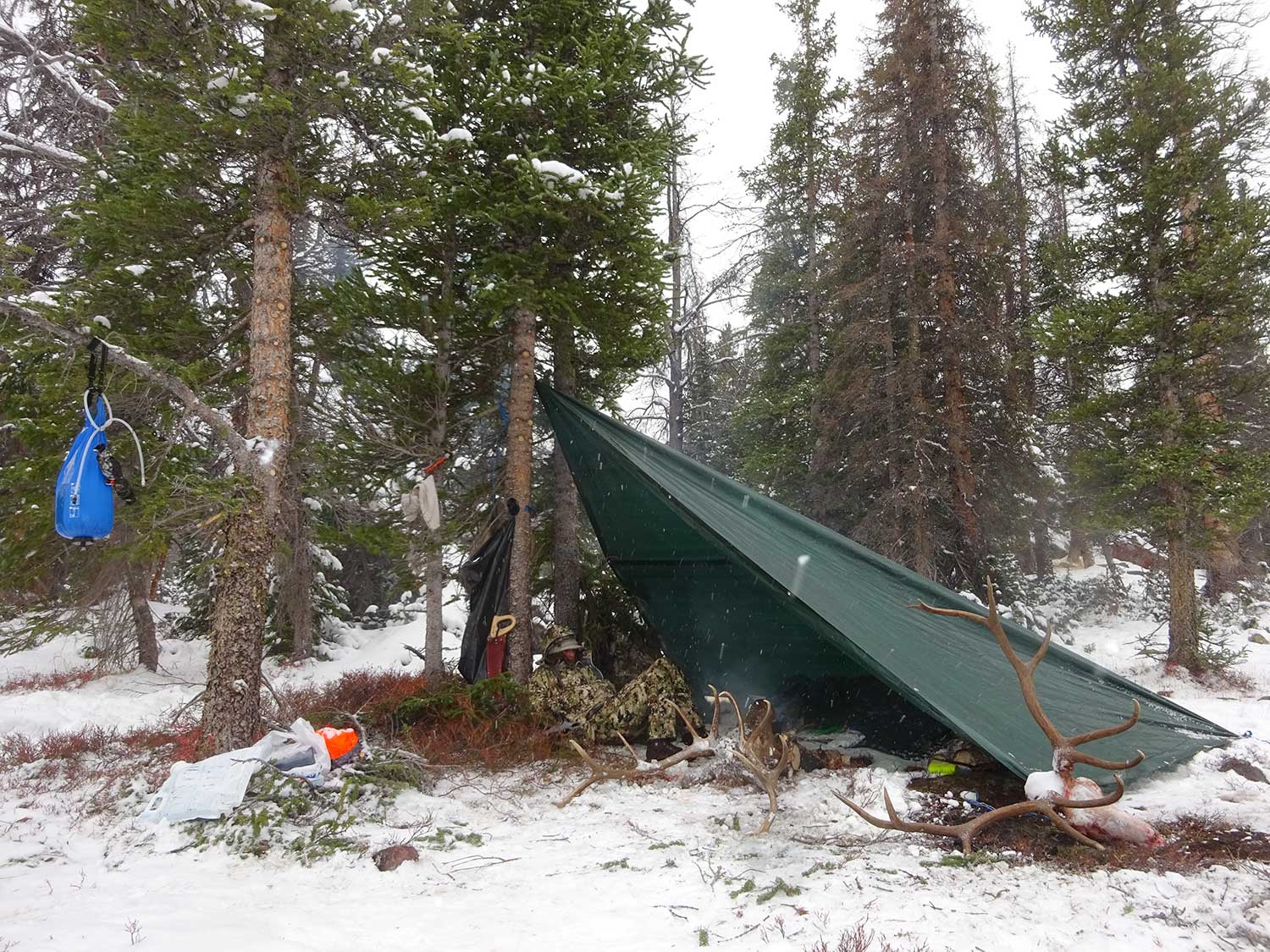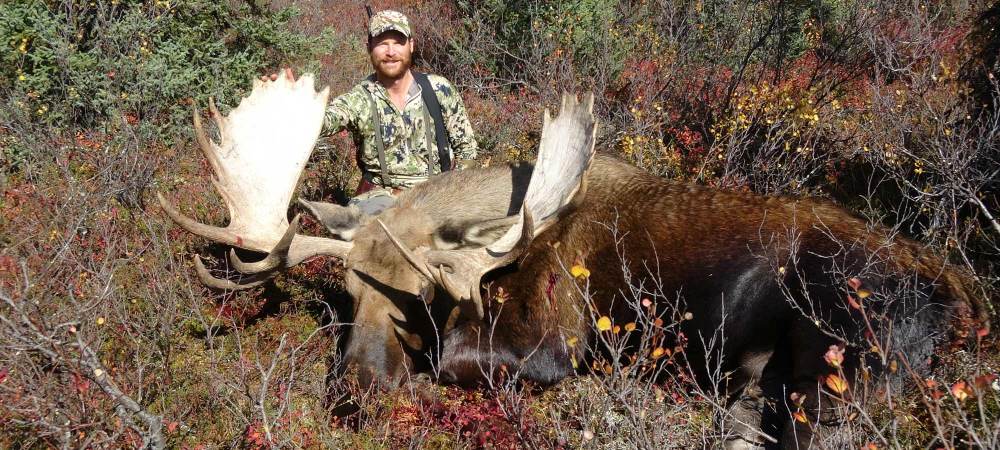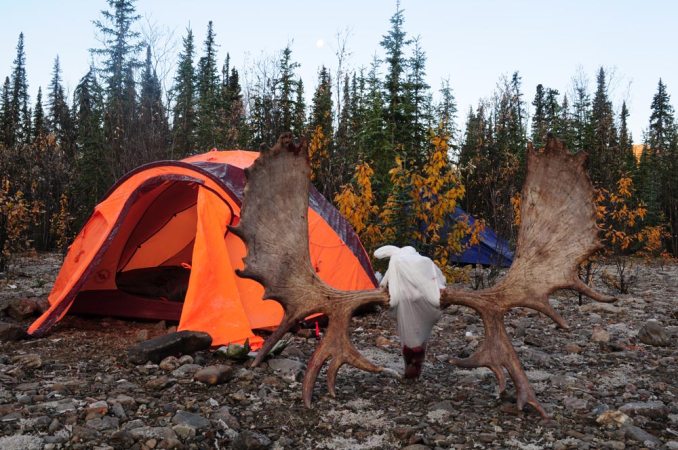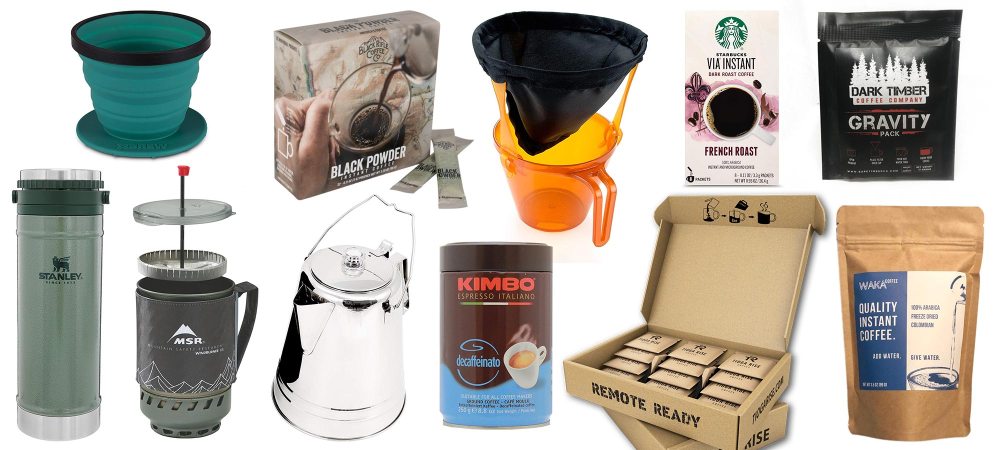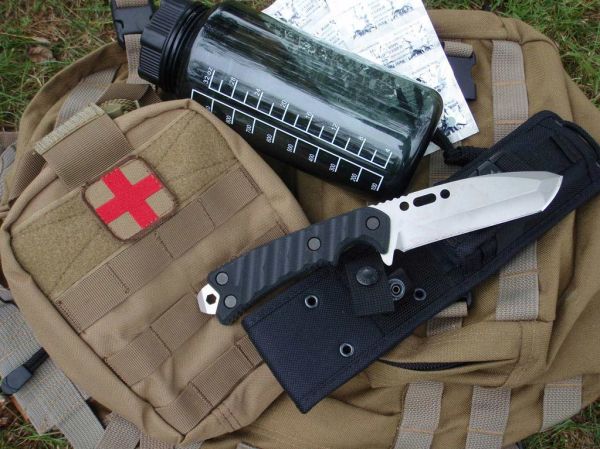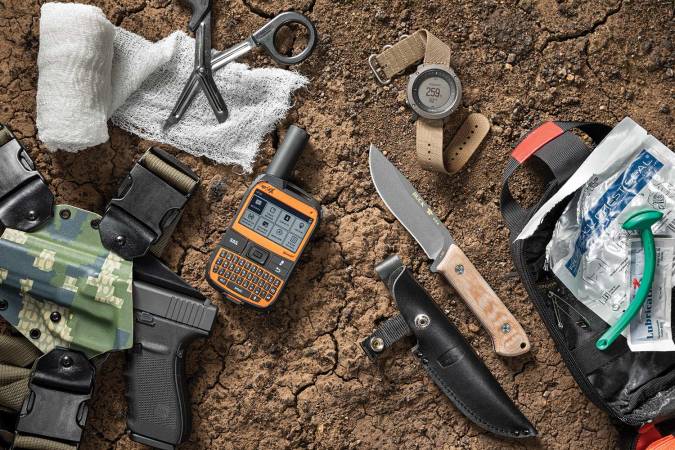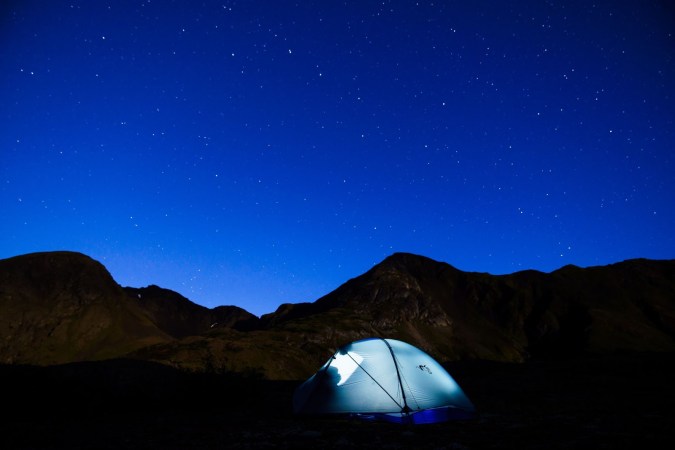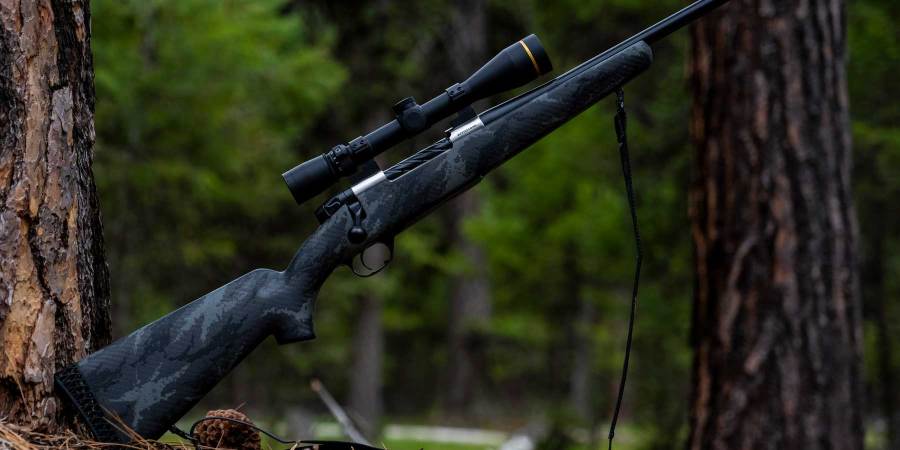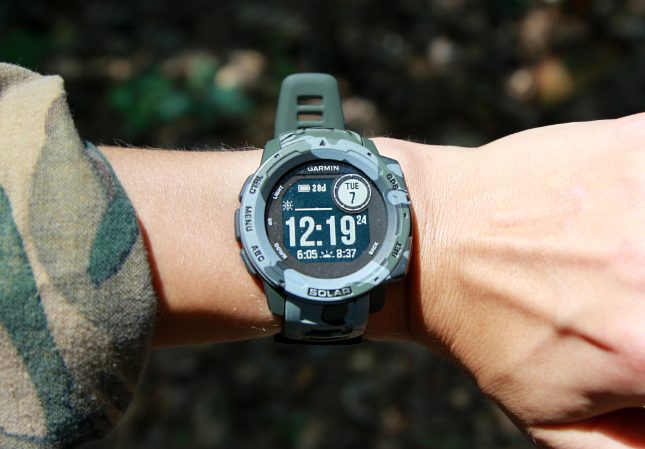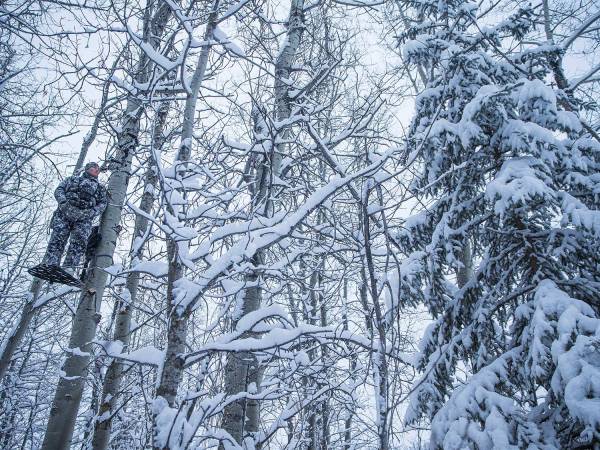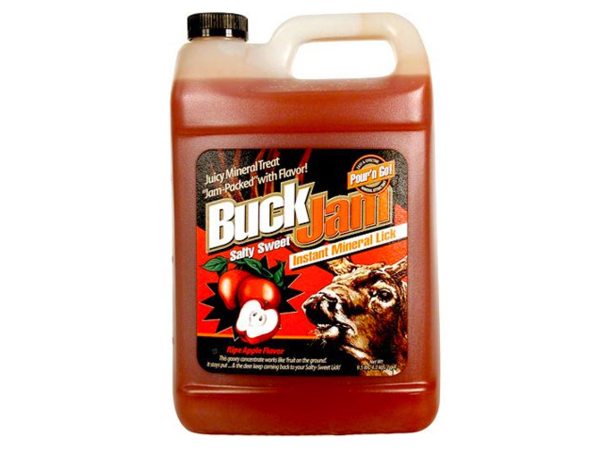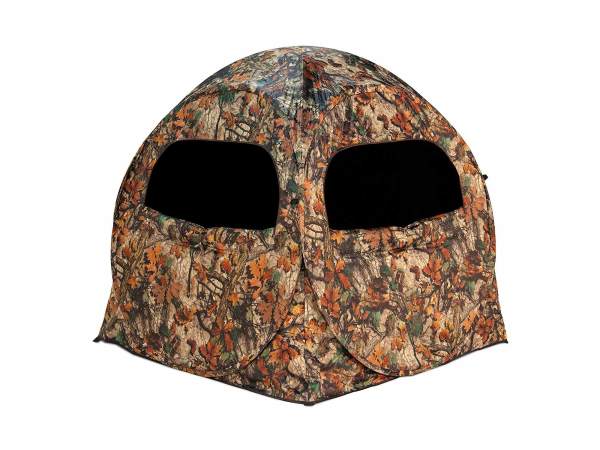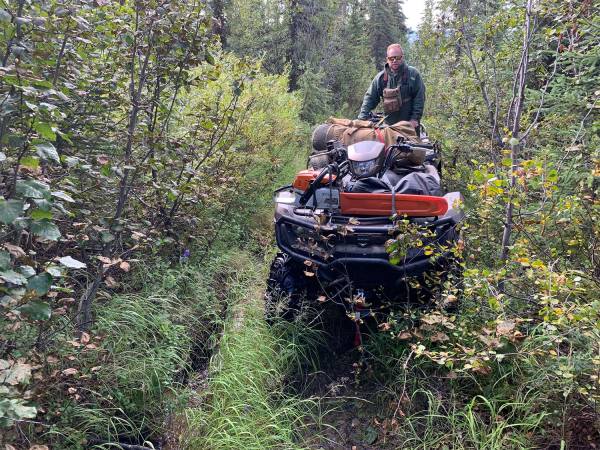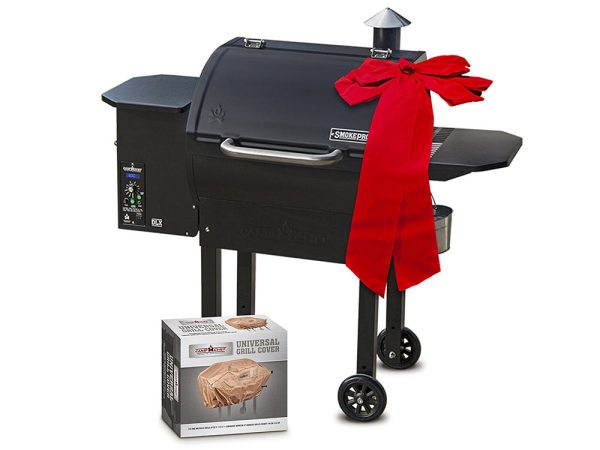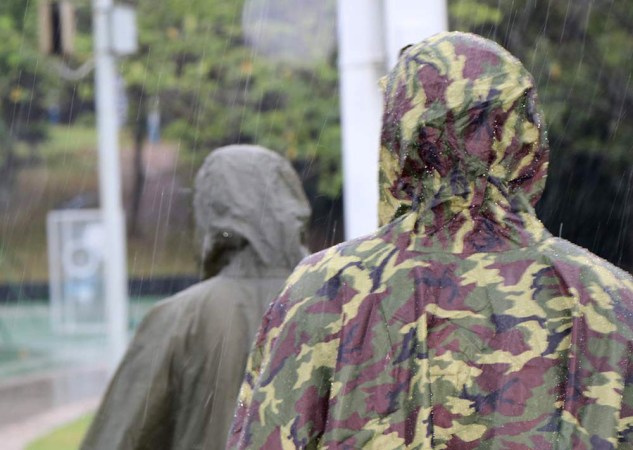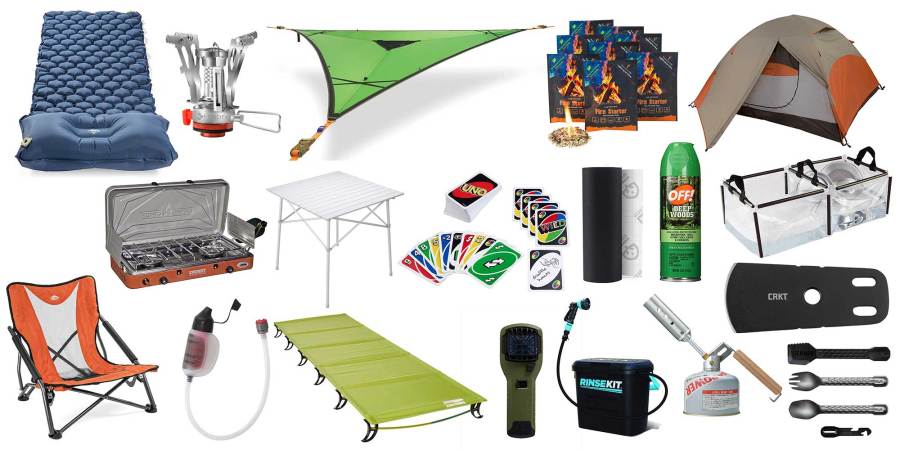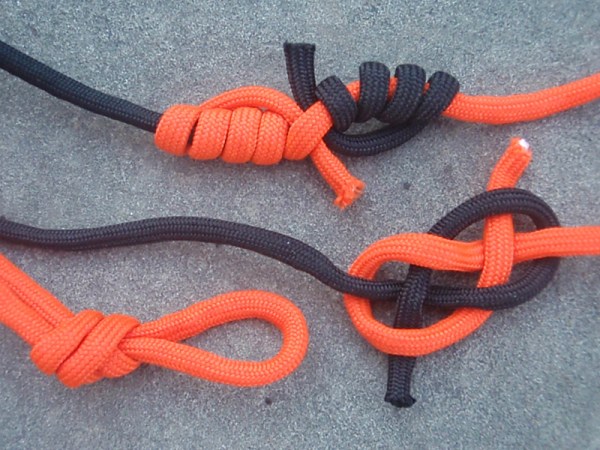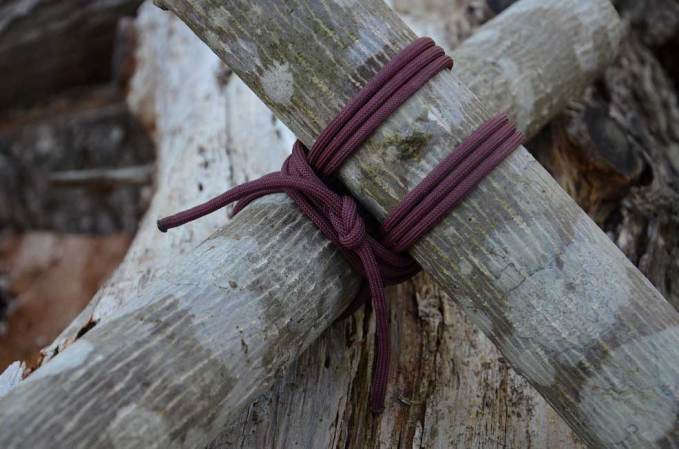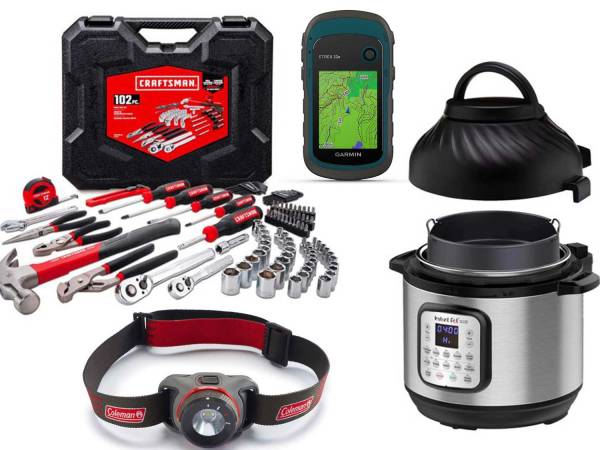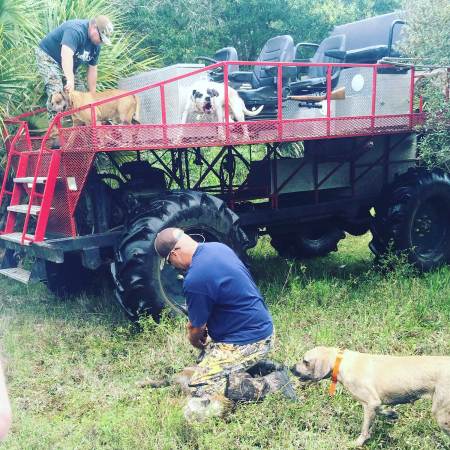We may earn revenue from the products available on this page and participate in affiliate programs. Learn More ›
Rain drummed on my tarp shelter, occasionally splashing far enough under the opening to sizzle into the fire. Dinner warmed on that same fire as I fashioned a birch-bark moose call, sewing it into shape with paracord threaded through holes that I punched by the small screwdriver on my multi-tool. I was deep in the heart of remote interior Alaska moose country, float-hunting a remote creek for moose. One of the first items on my gear list for that adventure was a tarp to be used for shelter, meat care, and more. Here are 11 great ways to use a tarp in the outdoors:
1. Build A Lean-To Shelter
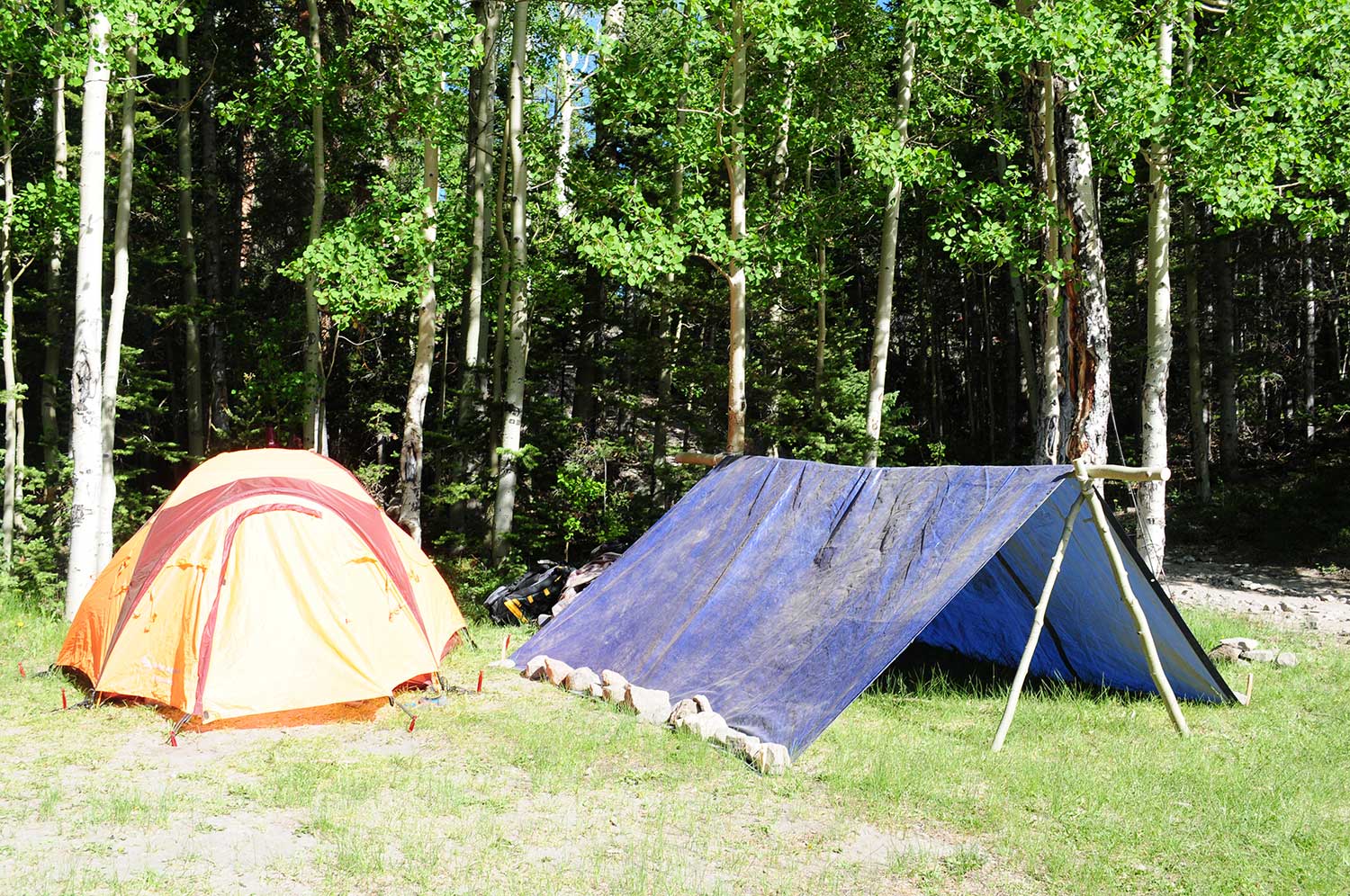
One of the most common shelters worldwide is a lean-to. They’re easy to pitch; all you’ll need is a 10×12-foot or larger tarp, some cordage, and a rope or pole for the ridge. Just hang a pole or stretch a tightrope, throw your tarp over the top, pull the edges out and down until they’re tight, and keep them in place with rocks or stakes. You can set a lean-to shelter up in just minutes, toss your gear inside, and go fishing.
2. Collect Drinking Water
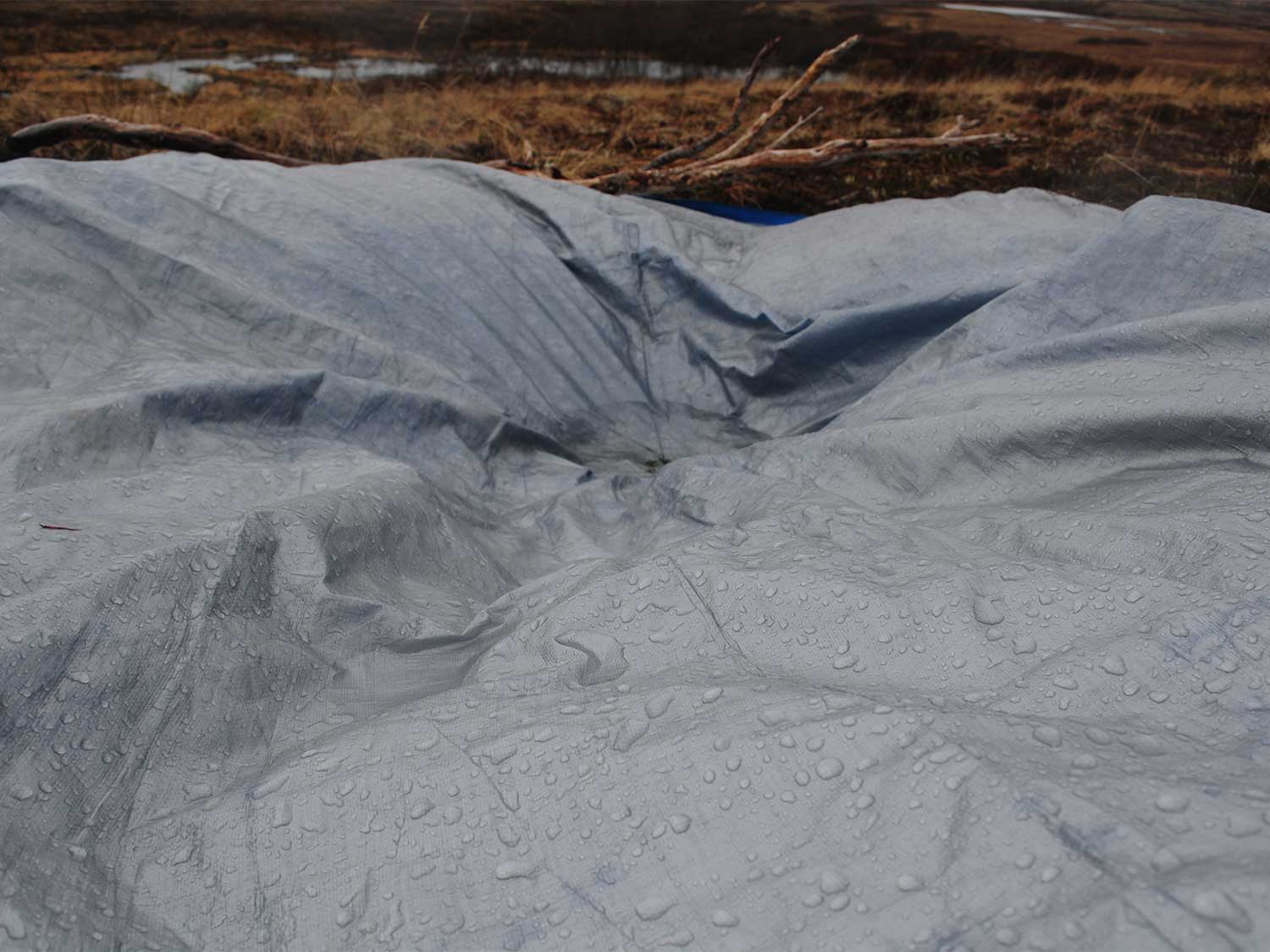
This photo was taken on location in brown bear camp on the Alaskan Peninsula. We collected all the drinking and washing water we needed with just this one catchment. You can do the same anywhere there is adequate rainfall. Simply spread a tarp across the tundra (or ground, if tundra is in scarce in your home woods). You’ll need a depression for the water to collect in, with the balance of the tarp sloping toward the depression. Weigh the edges down with rocks or sticks so the wind doesn’t blow your tarp catchment out of kilter.
3. Tarp A Horse Pack
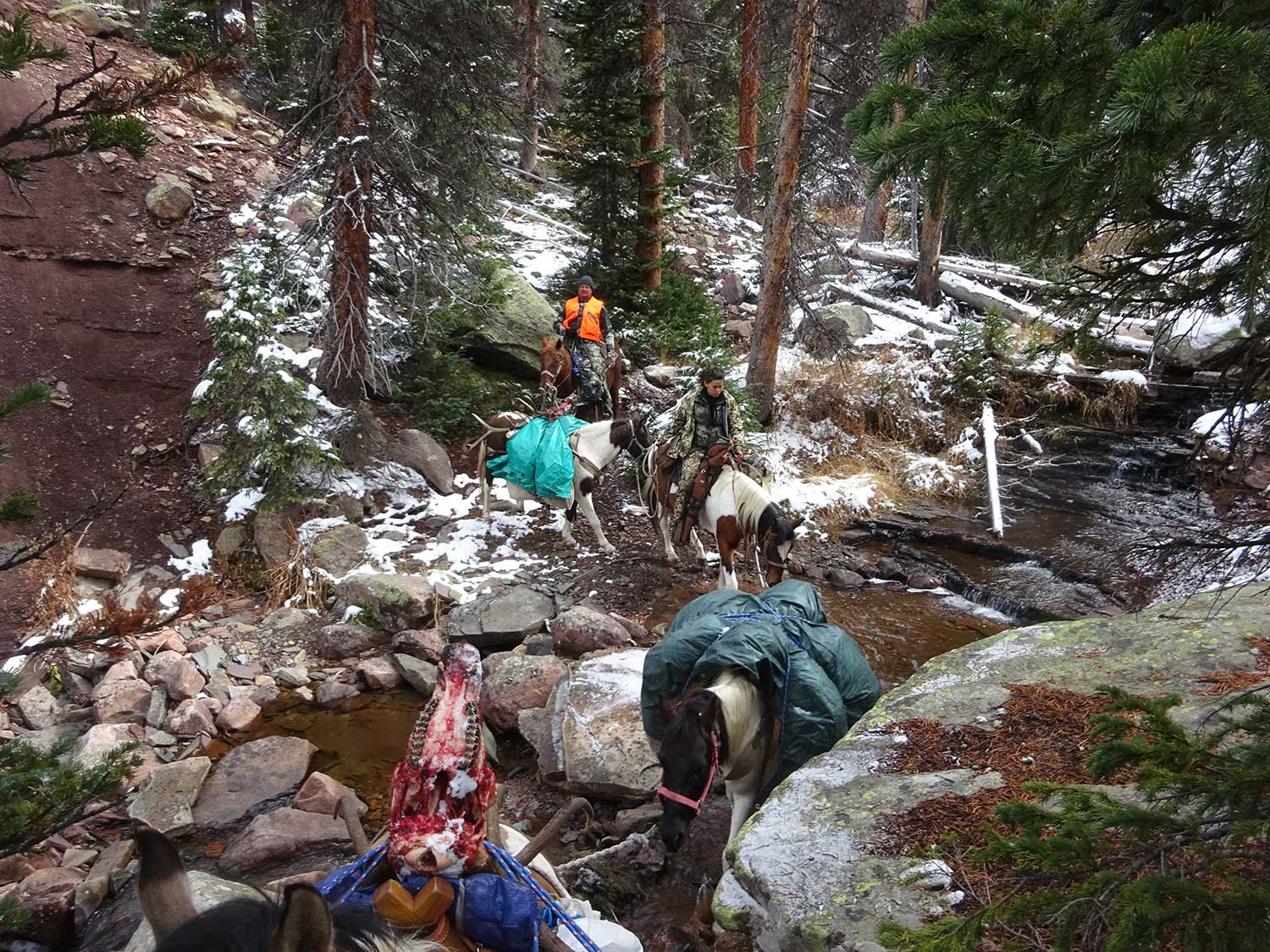
Horse packing trips—especially hunting trips—often encounter rain, snow, and bad weather. A small 4×6-foot tarp (or a larger one folded to that size) thrown over the loaded pack will keep most snow and rain off your gear. Just make sure to tie it down well so that the ends don’t flap, causing a ruckus, and letting moisture access your gear.
4. Make A Diamond Fly Shelter
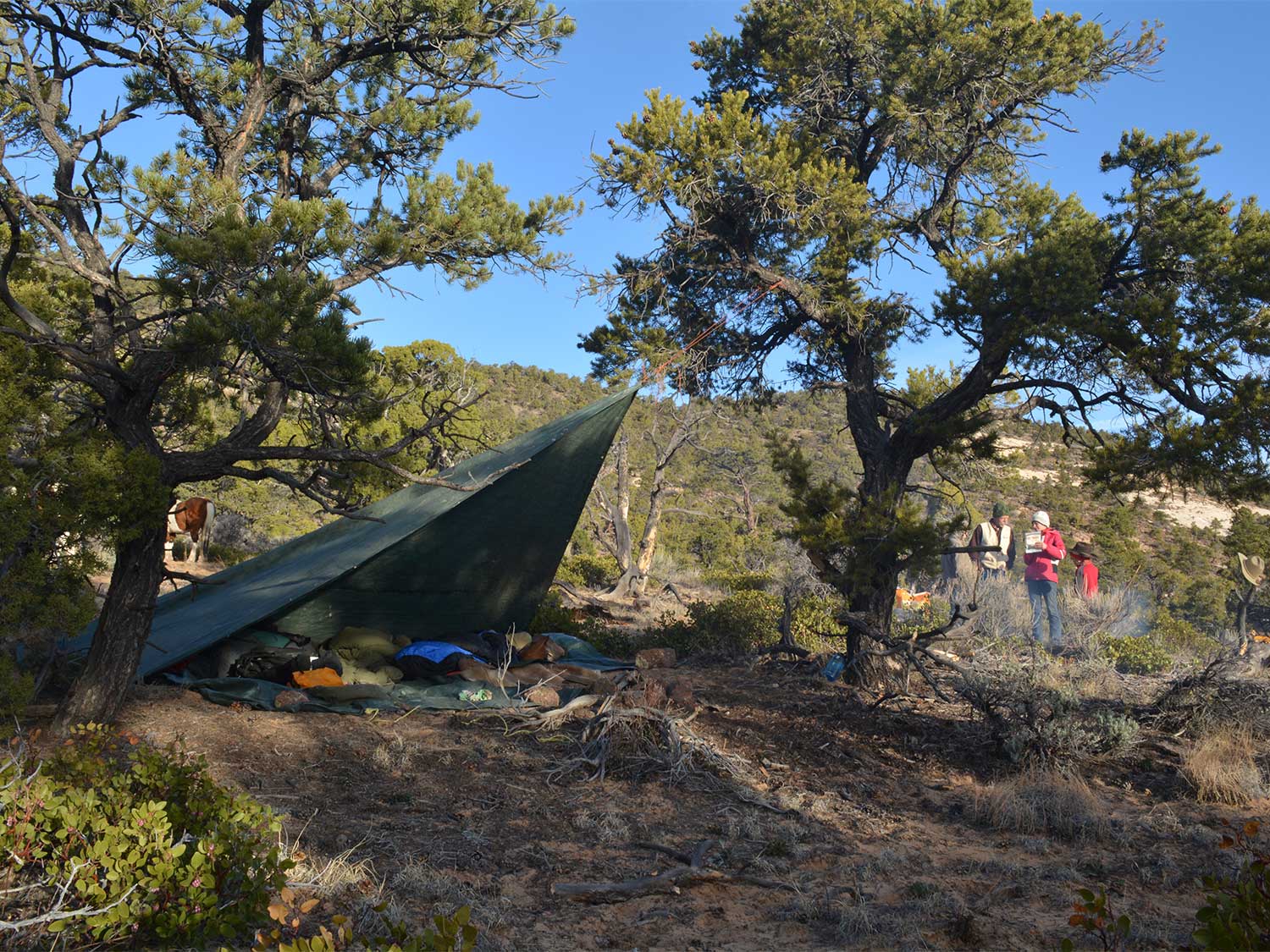
One of my personal favorite tarp shelters is the Diamond Fly. It protects from wind and storm, allows a fire for cooking or heat, and is easy to set up. Just anchor one corner to the ground with a big rock or wooden stake, stretch the opposite corner high to a tree, and then pull out and anchor the other two corners to the ground so the tarp forms a diamond shape. Pile rocks on the two edges that rest on the ground so wind can’t get into your shelter. If it’s windy, pitch your diamond so that the first corner is pointed into the wind. That way the wind can’t get inside to try to blow your shelter away.
5. Keep Meat Off The Ground
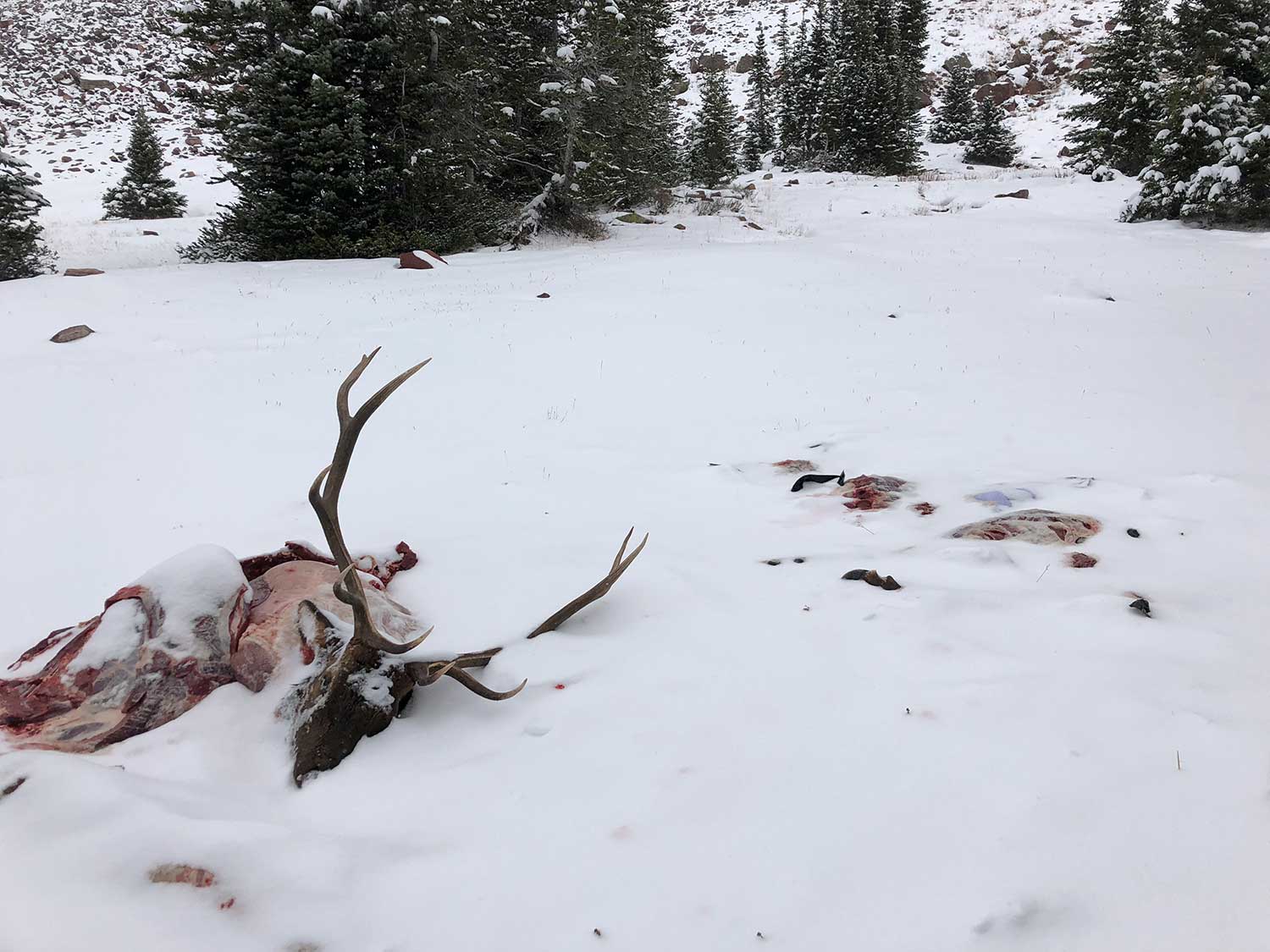
You can’t see it in this photo because snow covered everything after we laid the meat out. But there is plastic under the meat, which is under the snow. If you’re in a hurry or don’t have anywhere to hang meat or quarters, you can simply spread a tarp on the ground and lay your meat atop that. You don’t want to leave it on the ground for days, but it’s a temporary quick fix that will keep your meat clean and out of the dirt. If you’re leaving the meat overnight toss some sweaty clothes or socks on the tarp to keep coyotes and other scavengers away till you get back.
Read Next: 10 Things Elk Hunters Shouldn’t Leave Home Without
6. Pitch A Kitchen Awning
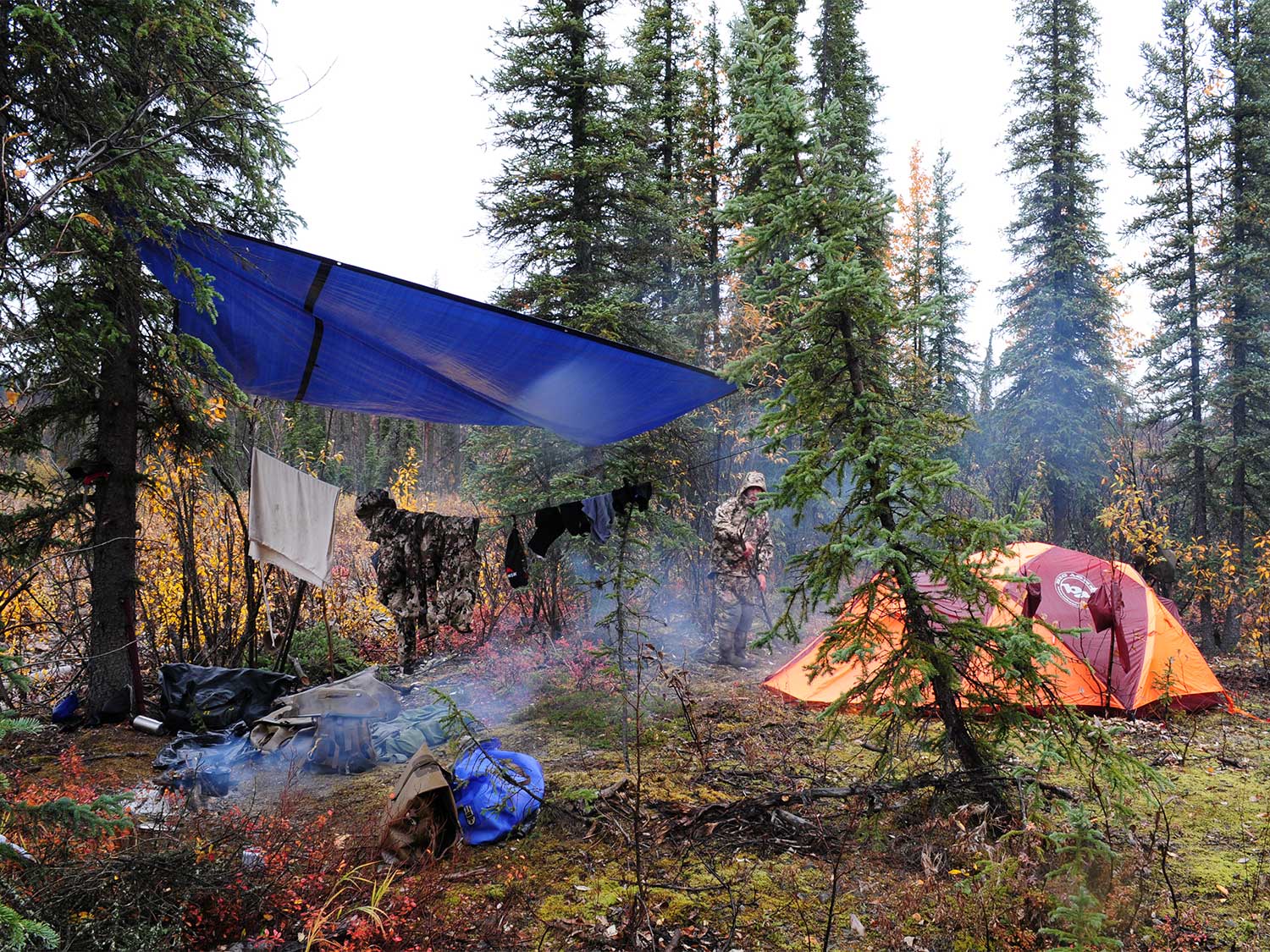
Unless you enjoy cooking in the rain, you can use a tarp to pitch a kitchen awning. It’ll keep cold mountain rain off the back of your neck and out of your vittles. Just reach or climb 8 to 10 feet off the ground and tie two tarp corners to trees, keeping the tarp edge between the corners taut. Then stretch the opposite edge of the tarp to more trees on the opposite side of your kitchen. Tie it a foot or two lower than the first edge so that rain can drain away. If you don’t have trees in the right places (they don’t usually grow in the perfect spot) you can cut poles from saplings, prop them under the corner, and anchor them with a guy cord stretched catty-corner from the tarp and anchored to another tree or a stake in the ground. Keep in mind that tarp awnings aren’t suitable for windy conditions.
7. Spread A Hide
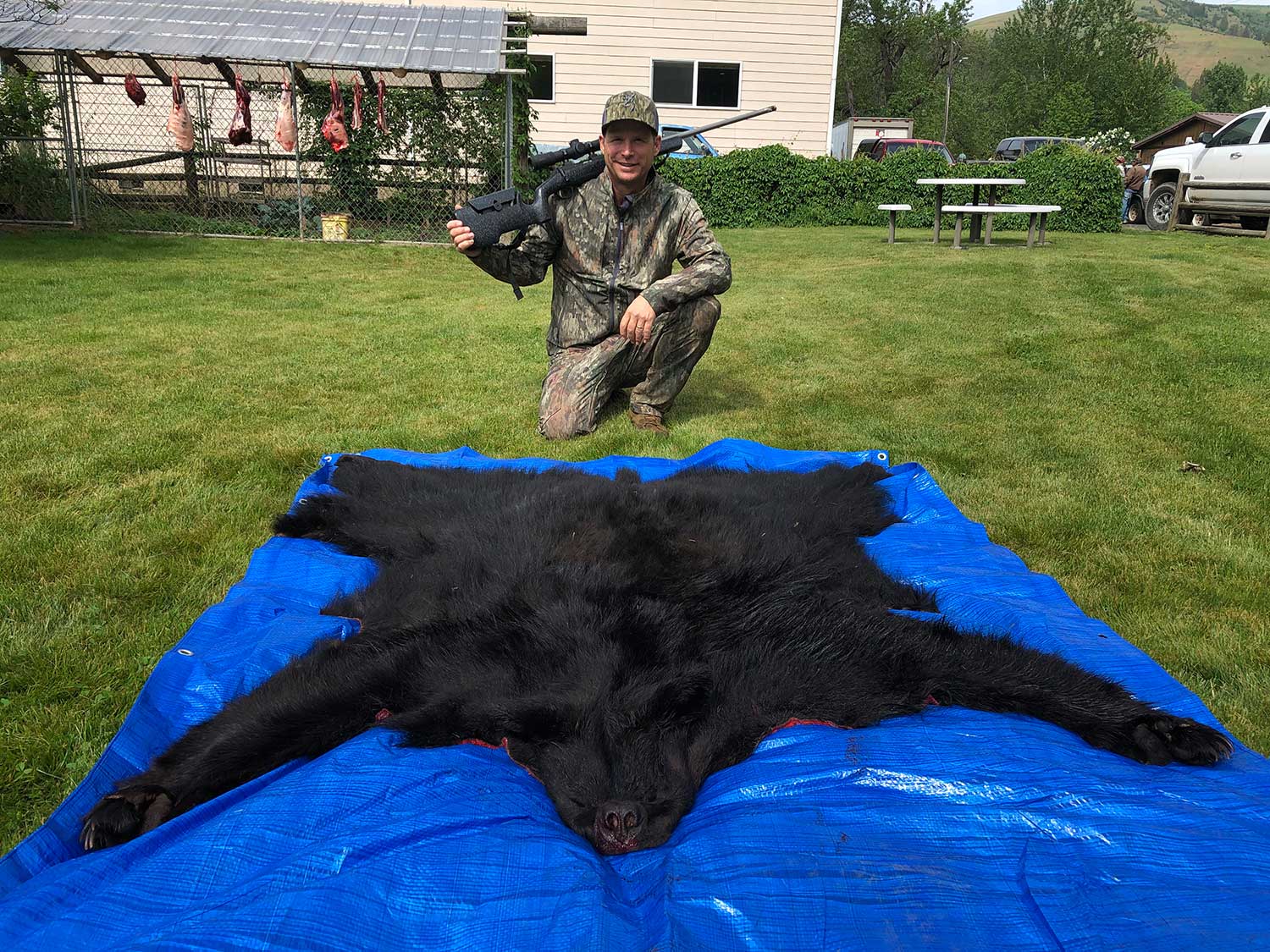
Keeping your prized bear hide or elk cape dirt and debris free is critical to the quality of your finished product. Keep a tarp handy and spread it on the ground before laying your hide down to air out, for fleshing, or when spreading salt. It’ll provide a protective barrier preventing dirt, bugs, and moisture from crawling into your hide or cape.
8. Cover Your Tent
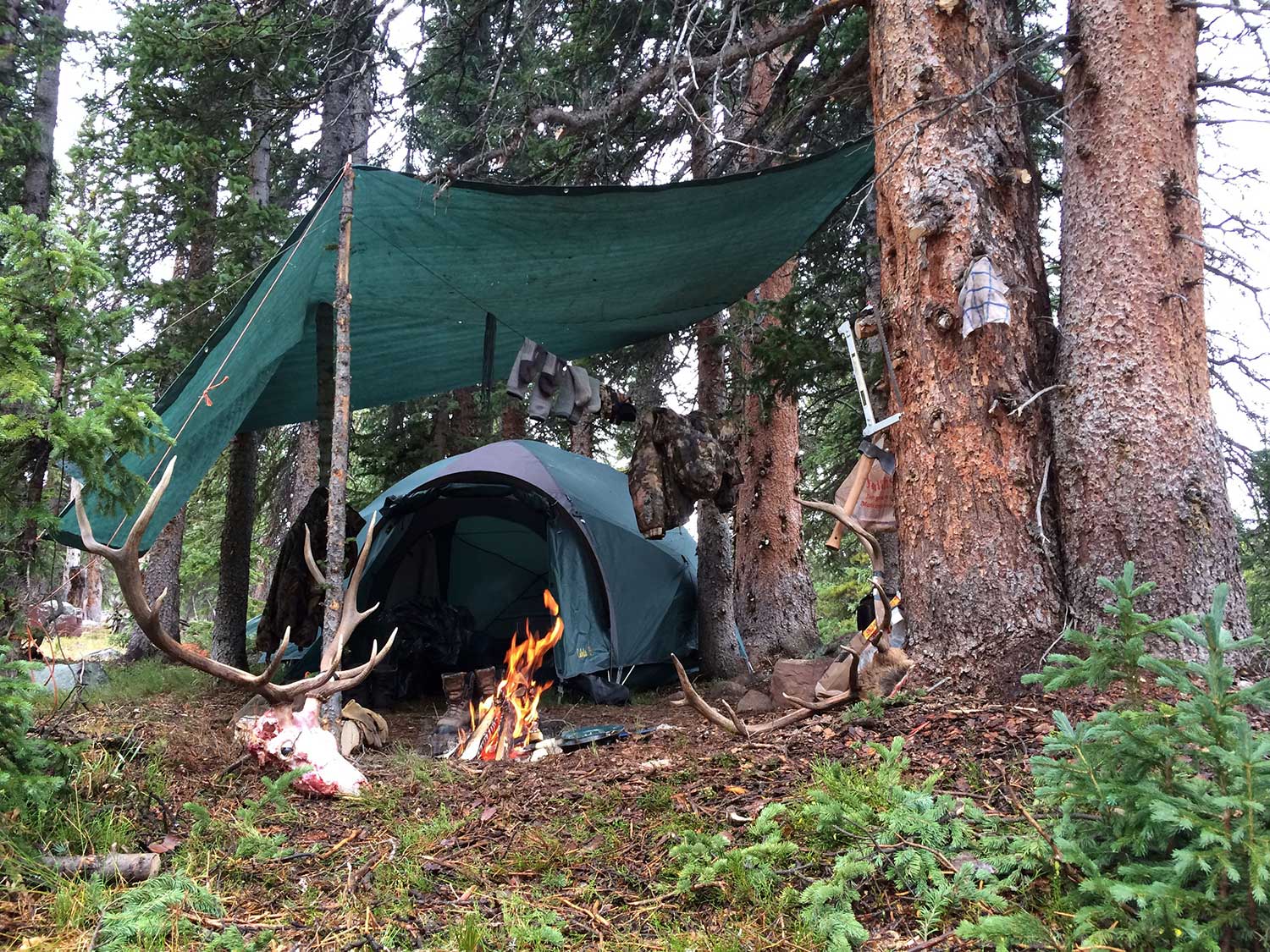
If your tent will be exposed to very heavy rain or snow, or prolonged precipitation, you should stretch a tarp over it. The tarp will provide an extra layer of protection for your tent so that it can keep you dry and warm. Just try to stretch the tarp taut enough so that it will carry it’s own load rather than resting on the tent, and at an angle so that it will drain. If snow builds up on the tarp be sure to shake it off at regular intervals.
9. Meat Protection
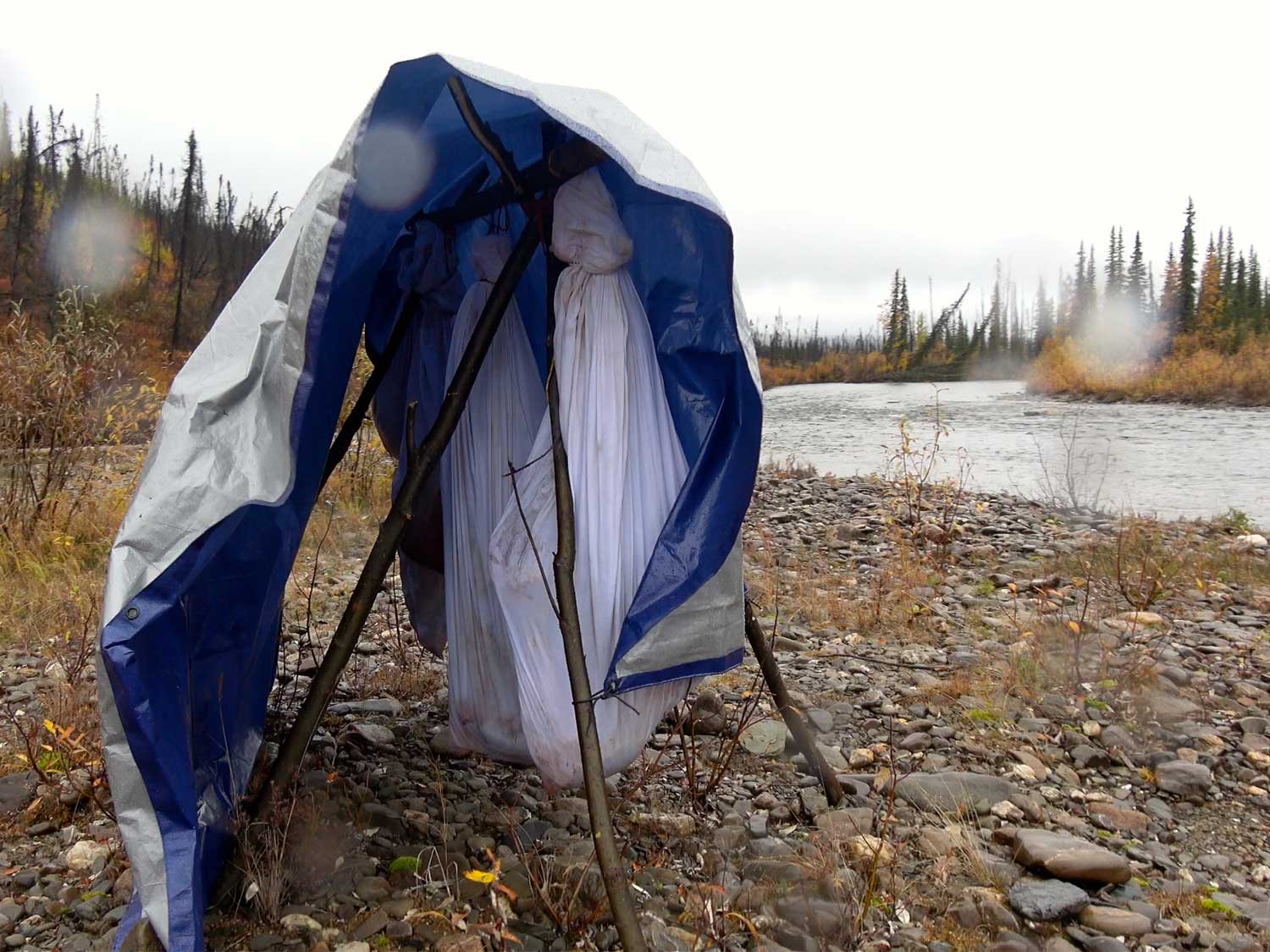
Wet, slimy meat is never a good thing. Keep a tarp handy, and if it looks like precipitation is in the offing, cover your meat or quarters with the tarp. Make sure it will keep the wet off your meat but still allow air to circulate. Be sure the tarp is secured so wind won’t blow it away or uncover your meat.
Read Next: 3 Tricks for Rigging Tarp Shelters
10. Keep Rain Off Your Hammock
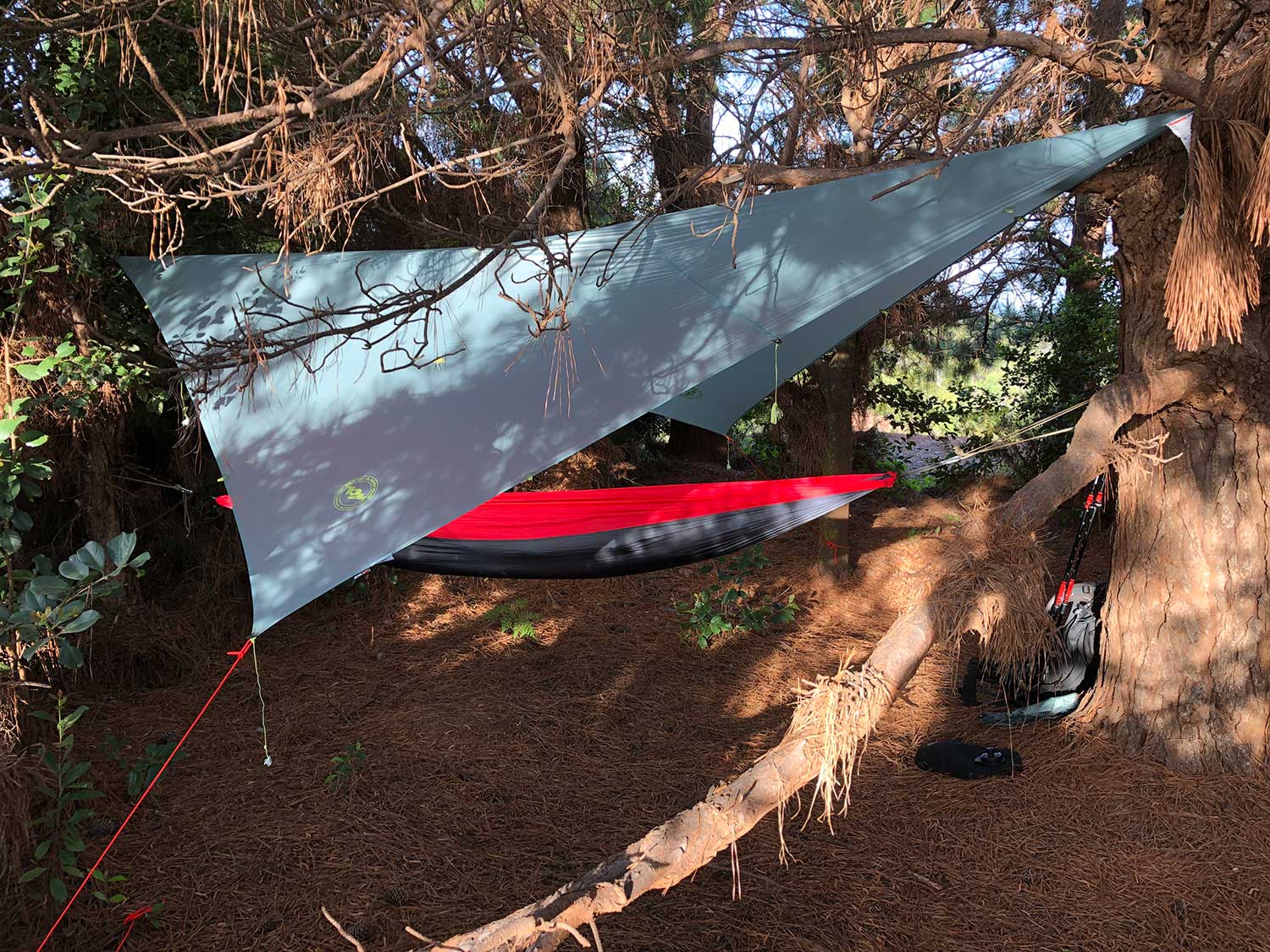
In hot or humid climates a hammock is a great place to get a good backcountry night’s sleep. But if rain is in the offing, you’ll need to pitch a tarp over your hammock to keep you dry. This Onyx UL tarp from Big Agnes is awesome, lightweight, and durable enough to handle windy, stormy conditions. Pitch it at an angle over your hammock to create a shelter long enough to keep your feet and head dry, and pull the sides down a bit so they’ll shed rain and provide a little protection from wind.
11. Make A Gear Shed
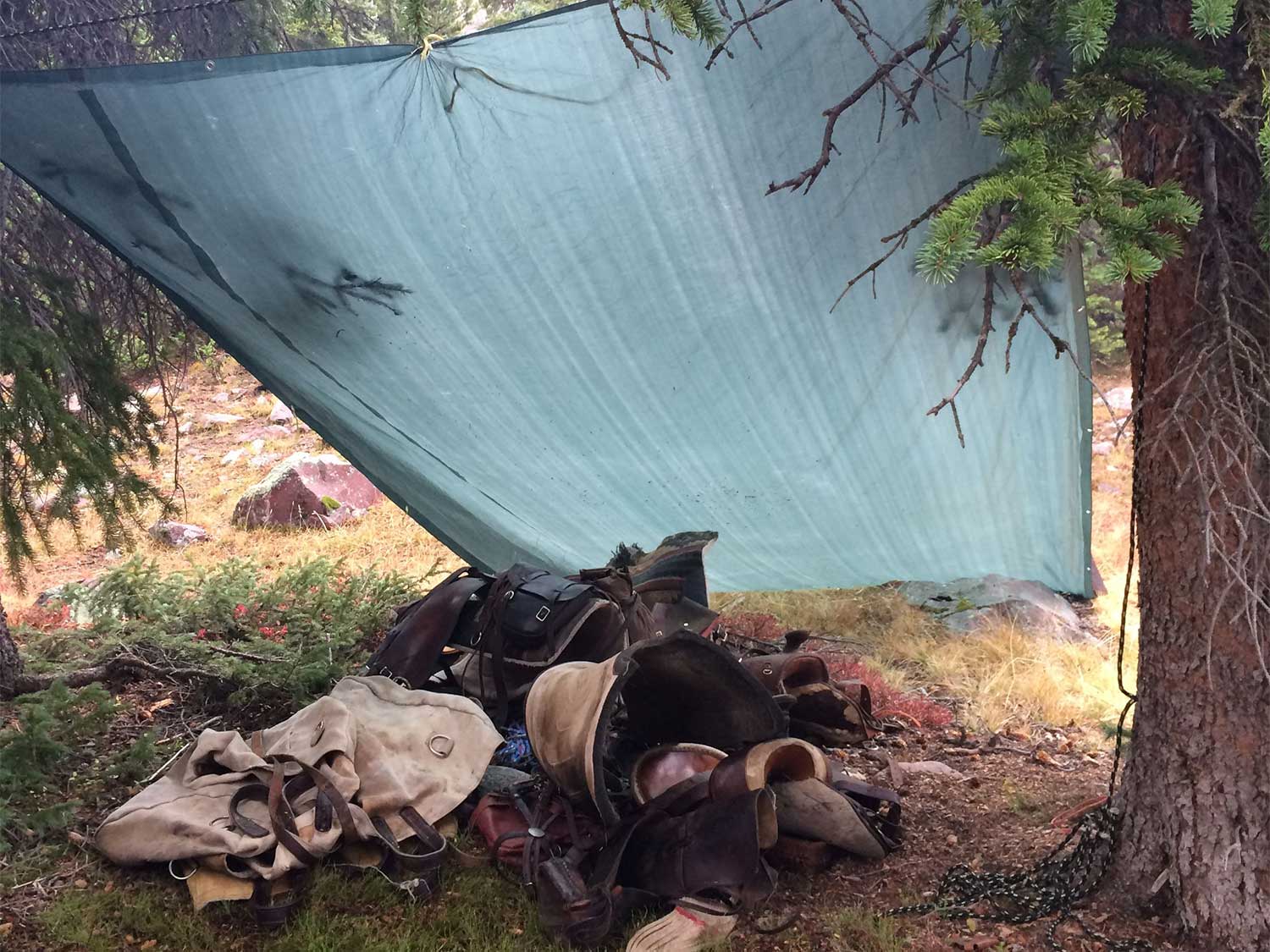
A shed is easy to pitch and a great way to protect your valuable hunting gear. Just tie two corners of your tarp to trees above the height of your head, and stretch the opposite corners to the ground. Anchor with rocks or stakes, and toss your gear underneath. In windy conditions point the low edge into the prevailing wind so it doesn’t carry your tarp shed away.

